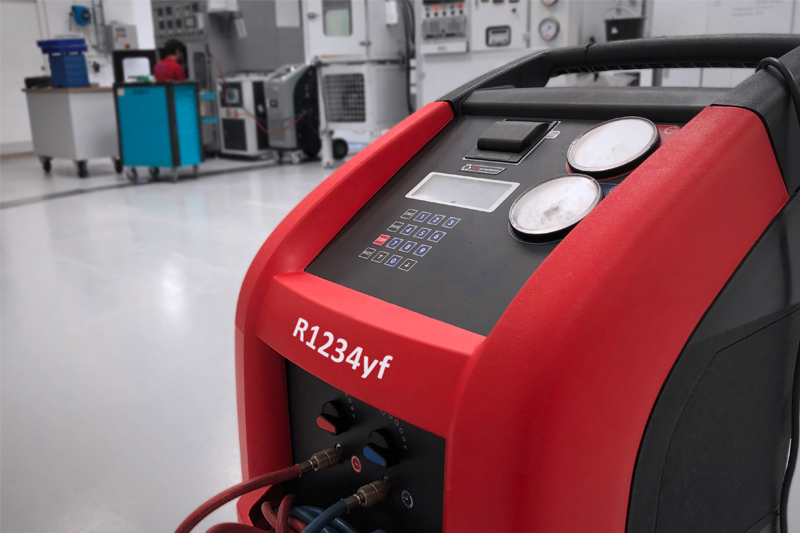
New European environmental legislation means that from January 1 2018, VMs will be using a new refrigerant in climate products – R1234yf. Michael Ingvardsen, Technical Training Manager at Nissens, tells PMM why the legislation has changed and what garages should be aware of.
PMM: R1234yf has been under development for a long time. Why has environmental legislation about refrigerants changed?
Michael Ingvardsen (MI): In 2006, the EU decided that the refrigerant used at that time in A/C systems – R134a – should be replaced with a refrigerant with a lower Global Warming Potential (GWP). GWP is the international standard used to measure how dangerous gases are for the degradation of the ozone layer in the atmosphere. A high GWP value has a high impact on the environment, and in 2006 it was found that R134a, with a GWP value of 1430, was far higher than the recommended maximum value of 150 GWP, and thus devastating to the environment.
PMM: The new refrigerant is more climate-friendly. But what is R1234yf and how does it differ from R134a?
MI: Basically, R1234yf is a gas that can change state from gas to liquid and back again. That is the definition of a refrigerant and the transformation that is needed to get cold air into a car’s cabin. The GWP value of R1234yf is four, which is well below the absolute maximum value of 150. This means that it breaks down much faster in the atmosphere, thus not destroying the ozone layer. Unfortunately, there is a slight drawback in that R1234yf is a bit flammable and also runs at a higher pressure and at higher temperatures.
PMM: If R1234yf was approved in 2008, why have VMs only begun using the new refrigerant this year?
MI: Actually, they started using R1234yf in 2013, but were not finished producing the gas, so there was not enough to fill all the cars at that time. When introducing a new refrigerant, you also need the tools and the systems to handle it. In addition, a new gas needs to be field tested for three years before it can be approved in Europe.
PMM: Today, VMs can only legally use R1234yf or CO2 in newly produced vehicles. What does the change from R134a to R1234yf mean?
MI: Specifically, it means that you must not use R1234yf in products that are not approved for it. You cannot replace the oil and pour the new refrigerant into a Nissens product that is not approved for its use. If you need to fill R1234yf in a new compressor today, make sure that the oil contained in the compressor fits the refrigerant – and this is usually done by labeling the products.
PMM: So you can use products that are not specifically designed for R1234yf?
MI: Even though the R1234yf works with a little higher pressure, you can easily use existing components. For example, if you have a compressor from 2000, you can still use it. You just have to be sure that the oil and the refrigerant fit together. It is also necessary to use special Double End Capped PAG oil for R1234yf compressors.
PMM: So there are some important requirements to be aware of. Are there any other challenges when switching from R134a to R1234yf?
MI: As R1234yf is flammable, you must have a different EU approval on the electrical system of the A/C. Therefore, you cannot use the same equipment as you used for R134a. In addition, you must not mix R134a and R1234yf. As R1234yf is flammable, it must also be stored in accordance with applicable regulations regarding flammable gases.









